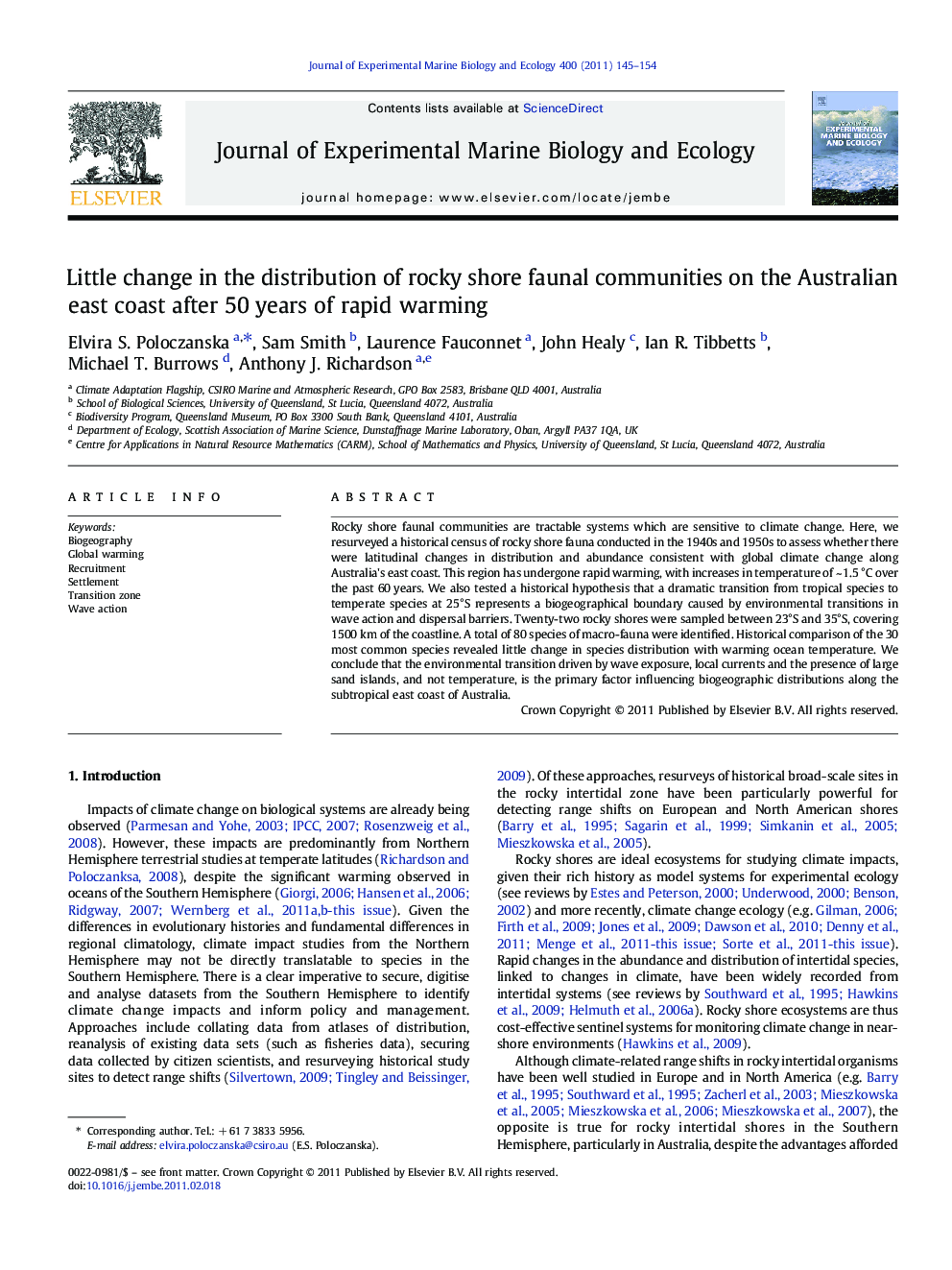| کد مقاله | کد نشریه | سال انتشار | مقاله انگلیسی | نسخه تمام متن |
|---|---|---|---|---|
| 4396343 | 1618463 | 2011 | 10 صفحه PDF | دانلود رایگان |

Rocky shore faunal communities are tractable systems which are sensitive to climate change. Here, we resurveyed a historical census of rocky shore fauna conducted in the 1940s and 1950s to assess whether there were latitudinal changes in distribution and abundance consistent with global climate change along Australia's east coast. This region has undergone rapid warming, with increases in temperature of ~ 1.5 °C over the past 60 years. We also tested a historical hypothesis that a dramatic transition from tropical species to temperate species at 25°S represents a biogeographical boundary caused by environmental transitions in wave action and dispersal barriers. Twenty-two rocky shores were sampled between 23°S and 35°S, covering 1500 km of the coastline. A total of 80 species of macro-fauna were identified. Historical comparison of the 30 most common species revealed little change in species distribution with warming ocean temperature. We conclude that the environmental transition driven by wave exposure, local currents and the presence of large sand islands, and not temperature, is the primary factor influencing biogeographic distributions along the subtropical east coast of Australia.
Research Highlights
► We surveyed 22 rocky shores across a biogeographic boundary on Australia's east coast.
► We compared site-specific species lists with data collected during the 1950s.
► Little change was found in the distributions of common species despite warming.
► No change was found in the position of the biogeographic boundary.
► Wave action and dispersal barriers are likely to be driving the biogeographic boundary.
Journal: Journal of Experimental Marine Biology and Ecology - Volume 400, Issues 1–2, 30 April 2011, Pages 145–154